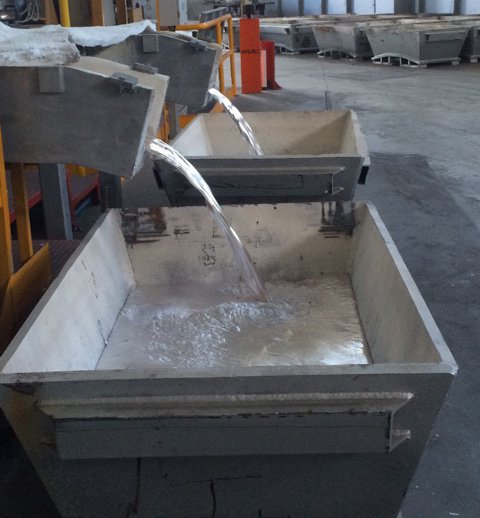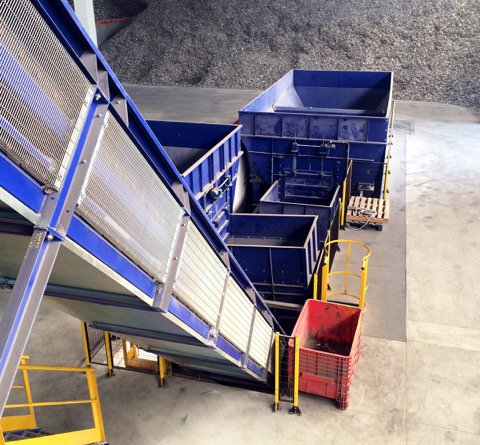Decoating is the process by which paint, plastic, oil, ink and paper are removed from the surface of aluminum scrap. All coatings contain either organic or inorganic compounds or very often both. When released by thermal degradation and/or oxidation they invariably undergo chemical change as the complex compounds are reduced to their basic form. For example, polypropylene is reduced to carbon monoxide, carbon dioxide, hydrogen and water vapor. Today there two main reasons why Aluminum companies have to decoat their scrap:
- Reduction of metal loss: if we assume that the current aluminum market price is 2.237 $/t (on January 26th 2018) each 1% metal loss is worth 22,3 $/t in lost revenue;
- Environmental Emissions: our plants ensures the emission limits according to the Best Available Technologies dated June 2016;

With our decoating technology, the scarp is heated in a rotary drum where the organic content is removed via convective thermal exchange. In our counterflow rotary drum the hot gas from afterburner, heat exchanger and de-dusting cyclone enters the kiln at the metal discharge end and flows counter to the scrap movement.
This ensures the highest temperature and oxygen are in contact exactly where it is needed. Consequently counter flow process produce very good quality decoating. This kind of rotary drums do not require an internal refractory lining but only an external insulation.
In the drum, the oxygen level and the gas temperature are continuously controlled via redundant instrumentations in order to minimize metal oxidation and consequently the dross formation in the melting furnace and to obtain the best decoating quality.

The oxygen level is fundamental for final scrap quality and emission (TOC concentration) and it is adjusted by adding secondary hot air directly in the afterburner. The internal drum temperature is controlled with the heat exchanger exit temperature: the gases that previously passed through an afterburner are cooled with a counter-flow heat-exchanger.

Adjusting the refractory by-pass valve position the internal drum temperature can be controlled. We can also control the internal temperature with recirculation gas flow rate (variable speed fan).
Drum internal pressure is controlled by pressure transducers and the “zero-point” valve adjusts the set point: the exhaust gas flow is processed in a second afterburner strictly to reduce CO and TOC followed by a quenching unit to avoid the dioxin formation.
With our aluminum scrap decoating we can now ensure a very high quality decoating that allow to minimize the melting furnace metal loss.
MAIN ADVANTAGES
With UBC we can reach and ensure the following results:- Metal recovery in melting furnace: 94-95%
- Surface aspect: absence of oxidation and carbon residues
- Temperature: 400-450°C
- Specific fuel consumption: 30-40 Nm3/t
- TOC emission: 5-10 mg/ Nm3
With extruded profiles scrap:
- Metal recovery in melting furnace : 96-97%
- Surface aspect: absence of oxidation and carbon residues
- Temperature: 400-450°C
- Specific fuel consumption: 38-45 Nm3/t
- TOC emission: 5-6 mg/Nm3